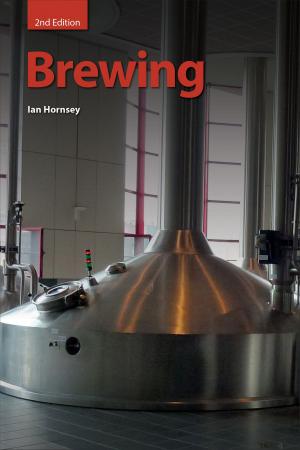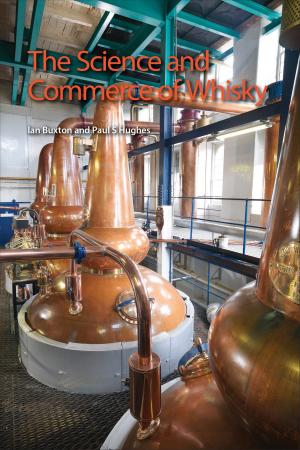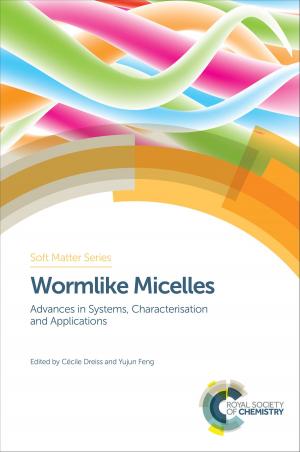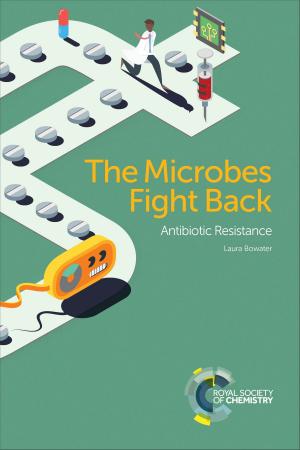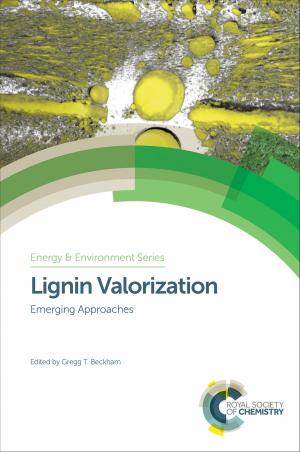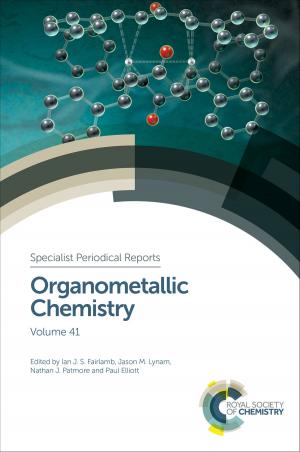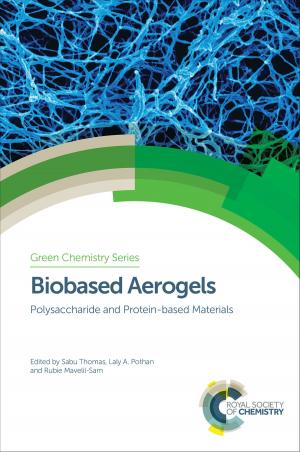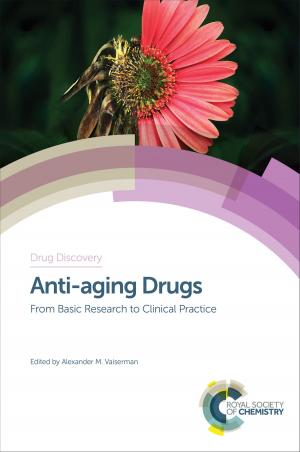Renewable Resources for Functional Polymers and Biomaterials
Polysaccharides, Proteins and Polyesters
Nonfiction, Science & Nature, Science, Biological Sciences, Biochemistry, Health & Well Being, Medical| Author: | Maya Thanou, Thomas Heinze, Koen Vercruysse, Ian Holt, Kurt I Draget, Chang-Sik Ha, Brenda Mann, Steve Cui, Werner Praznik, Tohru Shibata, John F Kennedy, Hans-Ulrich Endress, Glyn O Phillips, Ben-Zhong Tang, Alaa S Abd-El-Aziz, Stephen Craig, Jianhua Dong, Toshio Masuda, Christoph Weder | ISBN: | 9781782625841 |
| Publisher: | Royal Society of Chemistry | Publication: | November 9, 2015 |
| Imprint: | Royal Society of Chemistry | Language: | English |
| Author: | Maya Thanou, Thomas Heinze, Koen Vercruysse, Ian Holt, Kurt I Draget, Chang-Sik Ha, Brenda Mann, Steve Cui, Werner Praznik, Tohru Shibata, John F Kennedy, Hans-Ulrich Endress, Glyn O Phillips, Ben-Zhong Tang, Alaa S Abd-El-Aziz, Stephen Craig, Jianhua Dong, Toshio Masuda, Christoph Weder |
| ISBN: | 9781782625841 |
| Publisher: | Royal Society of Chemistry |
| Publication: | November 9, 2015 |
| Imprint: | Royal Society of Chemistry |
| Language: | English |
This book details polysaccharides and other important biomacromolecules covering their source, production, structures, properties, and current and potential application in the fields of biotechnology and medicine. It includes a systematic discussion on the general strategies of isolation, separation and characterization of polysaccharides and proteins. Subsequent chapters are devoted to polysaccharides obtained from various sources, including botanical, algal, animal and microbial.
In the area of botanical polysaccharides, separate chapters are devoted to the sources, structure, properties and medical applications of cellulose and its derivatives, starch and its derivatives, pectins, and exudate gums, notably gum arabic. Another chapter discusses the potential of hemicelluloses (xylans and xylan derivatives) as a new source of functional biopolymers for biomedical and industrial applications. The algal polysaccharide, alginate, has significant application in food, pharmaceuticals and the medical field, all of which are reviewed in a separate chapter. Polysaccharides of animal origin are included with separate chapters on the sources, production, biocompatibility, biodegradability and biomedical applications of chitin (chitosan) and hyaluronan. With the increasing knowledge and applications of genetic engineering there is also an introduction in the book to nucleic acid polymers, the genome research and genetic engineering.
Proteins and protein conjugates are covered, with one chapter providing a general review of structural glycoproteins, fibronectin and laminin, together with their role in the promotion of cell adhesion in vascular grafts, implants and tissue engineering. Another chapter discusses general aspects of a number of industrial proteins, including casein, caseinates, whey protein, gluten and soy proteins, with emphasis on their medical applications, and with reference to the potential of bacterial proteins. Another natural polymer resource, microbial polyesters, although small compared with polysaccharides and proteins, is also gaining increasing interest in biomedical technology and other industrial sectors. One chapter, therefore, is devoted to microbial polyesters, with comprehensive coverage of their biosynthesis, properties, enzymic degradation and applications.
By dealing with biopolymers at the molecular level, the book is aimed at the biomedical and wider materials science communities and provides an advanced overview of biopolymers at the graduate and postgraduate level. In addition it will appeal to both academic and industrial life scientists who are involved in research and development activities in the medical and biotechnology field.
This book details polysaccharides and other important biomacromolecules covering their source, production, structures, properties, and current and potential application in the fields of biotechnology and medicine. It includes a systematic discussion on the general strategies of isolation, separation and characterization of polysaccharides and proteins. Subsequent chapters are devoted to polysaccharides obtained from various sources, including botanical, algal, animal and microbial.
In the area of botanical polysaccharides, separate chapters are devoted to the sources, structure, properties and medical applications of cellulose and its derivatives, starch and its derivatives, pectins, and exudate gums, notably gum arabic. Another chapter discusses the potential of hemicelluloses (xylans and xylan derivatives) as a new source of functional biopolymers for biomedical and industrial applications. The algal polysaccharide, alginate, has significant application in food, pharmaceuticals and the medical field, all of which are reviewed in a separate chapter. Polysaccharides of animal origin are included with separate chapters on the sources, production, biocompatibility, biodegradability and biomedical applications of chitin (chitosan) and hyaluronan. With the increasing knowledge and applications of genetic engineering there is also an introduction in the book to nucleic acid polymers, the genome research and genetic engineering.
Proteins and protein conjugates are covered, with one chapter providing a general review of structural glycoproteins, fibronectin and laminin, together with their role in the promotion of cell adhesion in vascular grafts, implants and tissue engineering. Another chapter discusses general aspects of a number of industrial proteins, including casein, caseinates, whey protein, gluten and soy proteins, with emphasis on their medical applications, and with reference to the potential of bacterial proteins. Another natural polymer resource, microbial polyesters, although small compared with polysaccharides and proteins, is also gaining increasing interest in biomedical technology and other industrial sectors. One chapter, therefore, is devoted to microbial polyesters, with comprehensive coverage of their biosynthesis, properties, enzymic degradation and applications.
By dealing with biopolymers at the molecular level, the book is aimed at the biomedical and wider materials science communities and provides an advanced overview of biopolymers at the graduate and postgraduate level. In addition it will appeal to both academic and industrial life scientists who are involved in research and development activities in the medical and biotechnology field.

